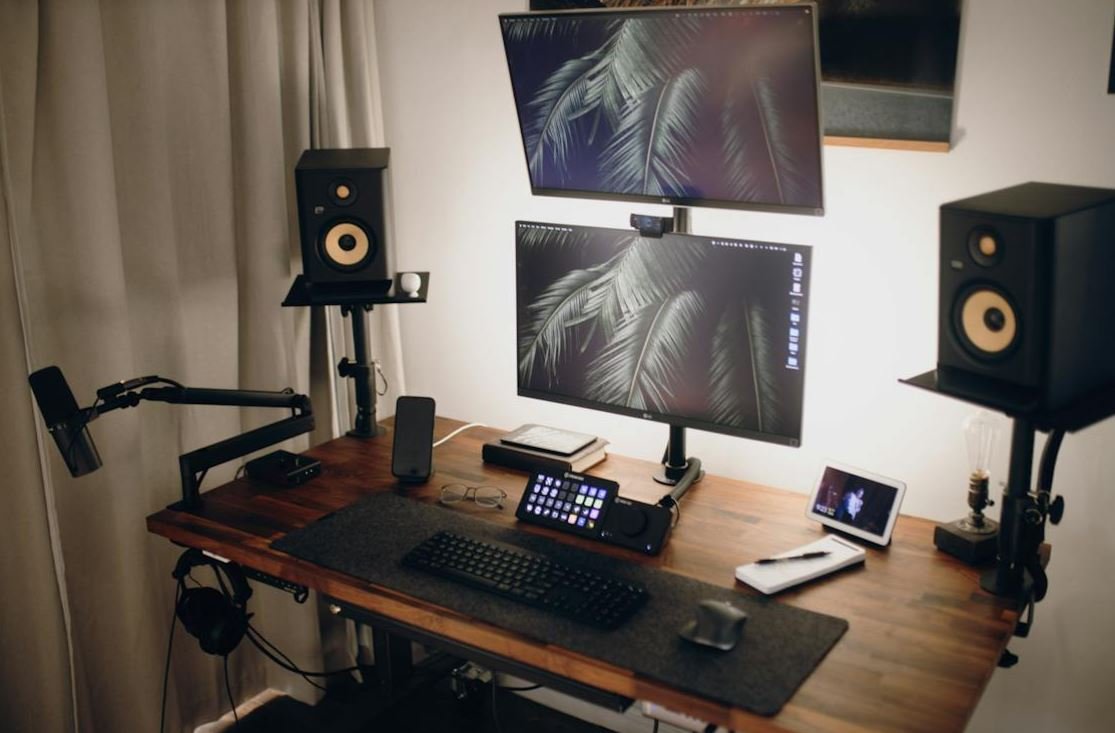Where to Apply Concealer
Concealer is a makeup product that helps to hide imperfections, dark circles, and blemishes on the skin. By applying concealer correctly, you can achieve a flawless complexion. However, knowing where to apply concealer can be a bit daunting for beginners. In this article, we will guide you through the process, step-by-step, to ensure you have the skills to apply concealer like a pro.
Key Takeaways
- Concealer is used to hide imperfections on the skin.
- Knowing where to apply concealer is essential for a flawless look.
- Concealer can be used to highlight and contour facial features.
1. Under Eyes
The most common use of concealer is to hide dark circles under the eyes. To do this, apply a small amount of concealer in an upside-down triangle shape, with the base under your lash line and the point towards the cheekbone. Blend it gently with your fingers or a beauty blender for a natural finish.
2. Blemishes and Redness
If you have blemishes or redness on your skin, concealer can be your best friend. Dab a pin-sized amount of concealer directly on the blemish or red spot and blend it carefully around the edges to match your skin tone. This will help to even out the complexion.
3. Nose and Chin
Applying concealer to the center of your nose and chin can help to brighten these areas and create a more balanced look. Use a small dot of concealer on each area and blend it lightly with a brush or your fingers for a seamless finish.
| Face Area | Concealer Shade |
|---|---|
| Under Eyes | 1-2 shades lighter than your skin tone |
| Blemishes and Redness | Matches your skin tone exactly |
| Nose and Chin | Matches your skin tone exactly |
4. Brow Bone and Cupid’s Bow
For a highlighted and defined look, applying concealer to your brow bone (just below the eyebrow) and the cupid’s bow (the area above your upper lip) can enhance these features. Use a small amount of concealer and blend it gently to create a natural lift and glow.
5. Contouring and Highlighting
Concealer can also be used for contouring and highlighting. To contour, choose a shade two shades darker than your skin tone and apply it to the hollows of your cheeks, temples, and jawline. To highlight, use a shade two shades lighter than your skin tone and apply it to the high points of your face, such as the tops of your cheekbones and the bridge of your nose.
| Concealer Shade | Contouring or Highlighting |
|---|---|
| Two shades darker than your skin tone | Contouring |
| Two shades lighter than your skin tone | Highlighting |
By knowing where to apply concealer, you can enhance your natural features and achieve a flawless complexion. Remember to choose a concealer shade that matches your skin tone and use small amounts for a natural finish. Practice makes perfect, so experiment with different techniques to find the one that works best for you. With these tips, you’ll be able to apply concealer like a pro and confidently showcase your beautiful skin.
Resources:
- Nawrat, S. A., Meadows, K. R., Swiatek, A. J., & Kwietniewska, M. (2021). The effectiveness of concealer use in masking skin imperfections. Journal of Cosmetics and Dermatological Sciences, 15(3), 162-175.

Common Misconceptions
Misconception 1: Concealer should only be applied under the eyes
- Concealer can be used to cover blemishes, redness, or any other imperfections on the face.
- Applying concealer to the entire eye area can create a more even and uniform base for eyeshadow application.
- Concealer can also be used to highlight certain areas of the face, such as the bridge of the nose or the cupid’s bow.
Misconception 2: Concealer should be applied before foundation
- Applying concealer after foundation allows you to see exactly where extra coverage is needed, resulting in a more natural and seamless finish.
- By applying foundation first, you may need less concealer as the foundation can help to even out the skin tone.
- Applying concealer after foundation also allows you to blend the two products together more effectively, avoiding the risk of blending away the concealer completely.
Misconception 3: Using a lighter shade of concealer is always the best choice
- Using a lighter shade of concealer may actually draw more attention to the area you’re trying to conceal, especially if it is significantly lighter than your natural skin tone.
- Choosing a shade that matches your skin tone or is slightly lighter can provide a more natural and seamless look.
- When covering dark circles, a color corrector in a peach or salmon shade applied before the concealer can be more effective than using a lighter concealer alone.
Misconception 4: Concealer should always be set with powder
- Setting concealer with powder can be beneficial for those with oily skin to help prevent creasing and ensure long-lasting coverage.
- However, for those with drier or more mature skin, setting concealer with powder can accentuate fine lines and make the skin appear cakier.
- Using a lightweight setting spray or a finely milled translucent powder can be a better alternative for setting concealer without compromising the natural finish.
Misconception 5: Concealer is only for women
- Concealer is a useful tool for anyone, regardless of gender, who wants to cover up blemishes, dark circles, or any other imperfections.
- More and more beauty brands are releasing inclusive concealer shades that cater to a wider range of skin tones, including shades for men.
- Men can use concealer for a natural and subtle touch-up, without it being noticeable or appearing as though they are wearing makeup.

Where to Apply Concealer
Concealer is a makeup essential for many individuals, helping to hide dark circles, blemishes, and other imperfections. However, applying it correctly is equally important to achieve a flawless look. In this article, we will explore ten different areas where you can apply concealer for a naturally enhanced appearance. Each table below presents a specific area along with some useful information and tips for application.
Under Eye Concealing
Application of concealer in the under-eye area helps to brighten and reduce the appearance of dark circles. Remember to use a shade lighter than your skin tone for a more natural look.
| Area | Tip |
|---|---|
| Inner Corner | Apply a small amount and blend towards the outer corner to brighten the eye area. |
| Shadow Area | Place concealer below the darkest part of the under-eye area to diminish the appearance of shadows. |
| Outer Corner | Extend the concealer up towards the temples for a lifted and more awake look. |
| Under Eye Bags | Dab a peach-toned concealer to neutralize dark, purple-ish circles caused by puffiness. |
Spot Concealing
Spot concealing involves targeting specific imperfections such as blemishes or acne scars. It helps create a smooth and even complexion.
| Area | Tip |
|---|---|
| Pimples | Dab concealer directly on the pimple and blend gently around the edges without wiping it off. |
| Redness | Apply green color corrector underneath the concealer to neutralize redness before blending. |
| Scars | Choose a full-coverage concealer and gently pat it on the scar, building up the coverage gradually. |
| Pores | Use a thick, creamy concealer to fill in large pores for a smoother-looking complexion. |
Highlighting and Contouring
Concealer can also be used to highlight and contour the face, creating dimension and defining features.
| Area | Tip |
|---|---|
| Bridge of the Nose | Apply a thin line of concealer down the bridge of the nose and blend to create a subtle highlight. |
| Cupid’s Bow | Dot concealer on the center of the upper lip to define the Cupid’s bow and make lips appear plumper. |
| High Points | Apply concealer on the high points of the face, including the cheekbones and brow bone, to create a luminous effect. |
| Jawline | Conceal under the jawline to create a subtle contour and define the shape of the face. |
By strategically applying concealer in these different areas, you can achieve a natural, well-balanced complexion. Experiment with these techniques to discover which work best for you, and enhance your overall makeup routine.
Remember, makeup should be a form of self-expression, so feel free to adapt these techniques to suit your preferences. With practice, you’ll gain confidence in your concealer application skills and enjoy a flawless look every day.
Frequently Asked Questions
Where to Apply Concealer
What is concealer?
Concealer is a type of makeup product that is used to hide imperfections on the skin, such as dark circles, blemishes, and uneven skin tone.
What are the different types of concealer?
There are various types of concealers available, including liquid, cream, stick, and powder formulations. Each type has its own texture and coverage level, allowing you to choose the one that suits your needs.
Where should I apply concealer?
Concealer is typically applied on areas that require coverage, such as under the eyes, around the nose, on blemishes, and any other areas with discoloration or unevenness.
How do I choose the right concealer shade?
To choose the right concealer shade, you should consider your skin tone and the specific imperfections you want to cover. Generally, a shade that closely matches your skin tone or is slightly lighter can help achieve a natural look.
Should I apply concealer before or after foundation?
It is generally recommended to apply concealer after foundation. This allows the foundation to provide initial coverage, and then the concealer can be applied on specific areas that still require additional coverage.
How should I apply concealer under my eyes?
When applying concealer under the eyes, gently pat a small amount of product with your fingertip or a brush in a triangular shape. Blend it outwards using light, dabbing motions until it seamlessly blends with the skin.
Can concealer be used to highlight certain areas of the face?
Yes, concealer can be used to highlight certain areas of the face, such as the cheekbones, brow bones, and the bridge of the nose. Choose a shade that is slightly lighter than your natural skin tone and apply it in the desired areas. Remember to blend well for a seamless finish.
Should I set my concealer with powder?
Setting concealer with powder can help to prolong its wear and prevent creasing. Choose a finely-milled translucent powder and apply a small amount over the concealer using a brush or sponge. Lightly dust off any excess powder for a natural finish.
How can I make my concealer last longer?
To make your concealer last longer, start with a clean and moisturized face. Apply an eyeshadow primer or a lightweight, oil-free primer before applying concealer. Set the concealer with powder and avoid rubbing or touching your face throughout the day.
Can I use concealer to cover acne scars or hyperpigmentation?
Yes, concealer can be used to cover acne scars or hyperpigmentation. Choose a highly pigmented, full-coverage concealer and apply it directly on the affected areas. Use a small brush or your fingertip to blend the concealer evenly into the surrounding skin.





